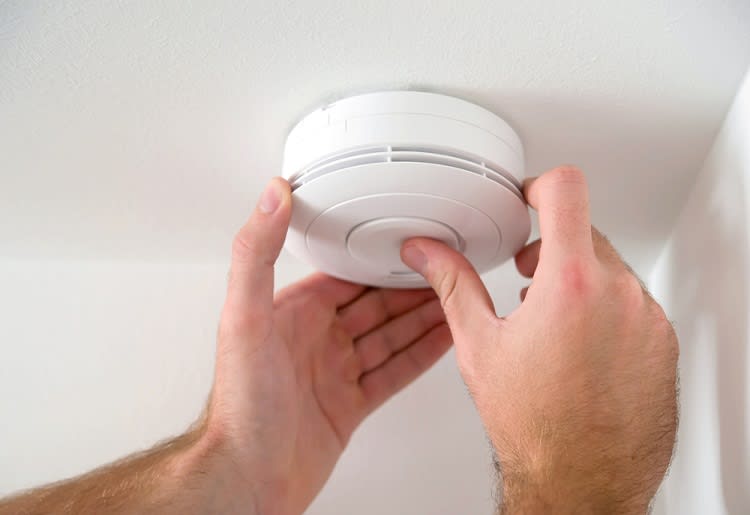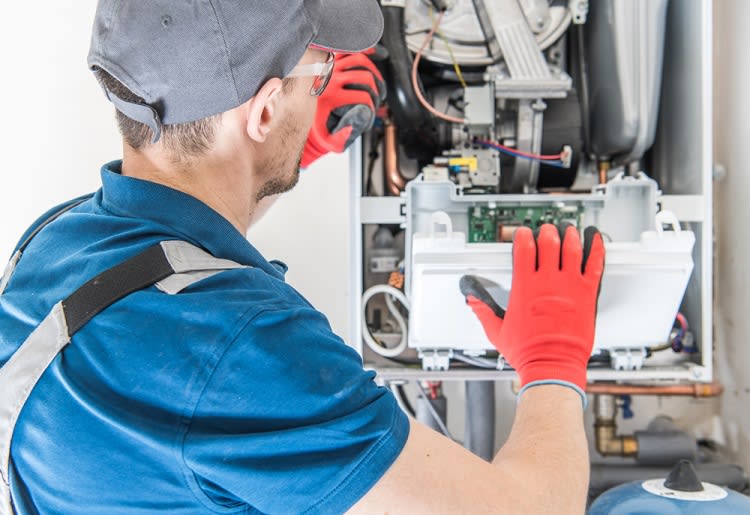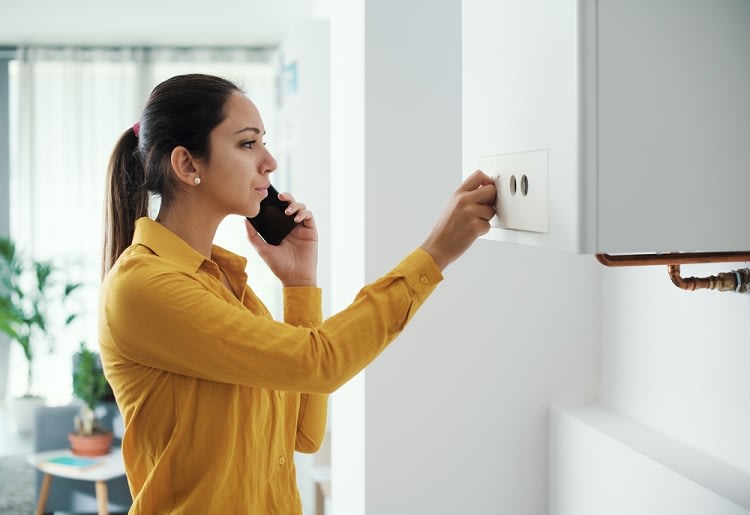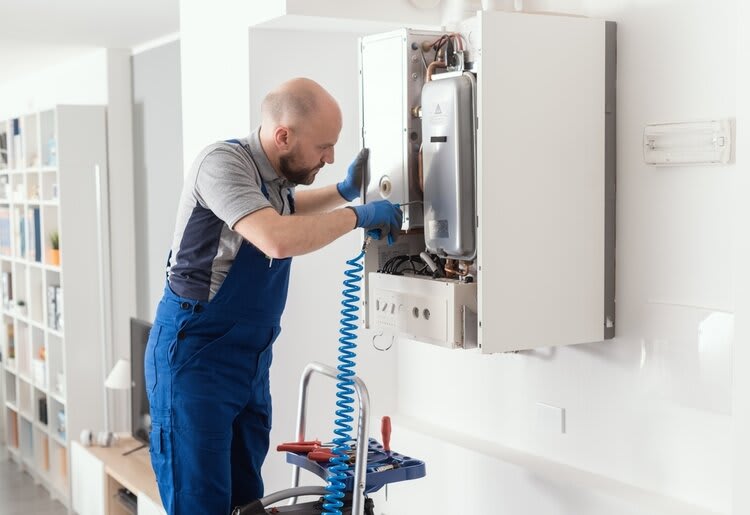The good news is that there are steps you can take to avoid carbon monoxide poisoning in your home. And if you have a home warranty, following these steps should be part of your regular maintenance routine.
Follow these 10 gas furnace maintenance steps to help keep your family safe from carbon monoxide poisoning.
» Don't have a home warranty plan? Check out our top picks for the best home warranty companies to protect against unexpected maintenance costs.
1. Schedule an Annual Furnace Inspection
Carbon monoxide is produced whenever fuel is burned, and it can quickly build up to dangerous levels if there is a problem with your furnace. According to the Centers for Disease Control (CDC), furnace inspection is one of the easiest ways to prevent carbon monoxide poisoning. Yet, over 400 Americans are killed by this colorless, odorless gas every year.
You can ensure that your furnace operates safely and efficiently by scheduling an annual inspection with a local heating and cooling contractor. The best home warranties for HVAC units cover routine maintenance and repairs and often have a network of vetted contractors you can use. During the inspection, a qualified technician will clean the burners, check for proper ventilation, and test for leaks.
2. Install a Carbon Monoxide Detector
Another important step in preventing carbon monoxide poisoning is to install a carbon monoxide detector in your home, which will sound an alarm if it detects high levels of carbon monoxide in the air. You should install a carbon monoxide detector near each sleeping area in your home.
If you don't already have a carbon monoxide detector, you can get one at your local hardware store. Most carbon monoxide detectors are battery-operated, so you'll need to replace the batteries every six months or so.
» Need help keeping a regular HVAC maintenance schedule? Check out these HVAC maintenance tips.

3. Test and Replace Your Carbon Monoxide Detectors Regularly
You should test your carbon monoxide detectors monthly to make sure they’re working properly. You can test your carbon monoxide detector by pressing the test button. If the alarm sounds, the detector is working properly. You'll need to replace the batteries if the alarm doesn't sound.
You should also replace your carbon monoxide detector every five years. Carbon monoxide detectors have a limited lifespan and become less effective over time. By replacing your carbon monoxide detector every five years, you can be sure it will continue to protect you and your family from carbon monoxide poisoning.
4. Inspect Your Furnace Filters Monthly and Replace Them as Needed
Another important step in preventing carbon monoxide poisoning is to inspect your furnace filters monthly and replace them as needed. Furnace filters are designed to remove contaminants from the air but can become clogged over time. If your furnace filter is clogged, it can cause your furnace to work harder than it should, leading to carbon monoxide leaks.
You can inspect your filter by removing it from the furnace and holding it up to a light. If you can see light shining through the filter, it's clean and doesn't need to be replaced. If the filter is dark or opaque, it needs to be replaced. Most furnace filters should be replaced every three months.
» Want more maintenance tips? Here are 10 tips homeowners only learn after their first year.
5. Keep Your Furnace Area Clean and Free of Debris
Another important step in preventing carbon monoxide poisoning is to keep your furnace area clean and free of debris. This is an essential part of HVAC maintenance.
If your furnace area is cluttered, it can block airflow and lead to carbon monoxide leaks. You should vacuum the area around your furnace monthly to remove dust and debris. You should also keep any flammable materials, such as newspapers and rags, away from your furnace.
6. Use Gas-Powered Appliances in Well-Ventilated Areas
You should only use gas-powered appliances in well-ventilated areas. Gas-powered appliances, such as furnaces and water heaters, produce carbon monoxide. If they're used in enclosed spaces, carbon monoxide can build up and cause poisoning.
» Want to make your appliances last longer? Use these tips to increase the life span of your appliances.

7. Have Your Chimney Inspected and Cleaned Yearly
If you have a fireplace, you should have your chimney inspected and cleaned yearly. Over time, soot and debris can build up in your chimney, leading to carbon monoxide build-up.
A professional chimney sweep can remove the soot and debris from your chimney and prevent carbon monoxide leaks.
8. Don’t Use Your Oven to Heat Your Home
One of the most common ways people are poisoned by carbon monoxide is by using their ovens to heat their homes. While it might seem like a good way to save on your heating bill, using your oven to heat your home is extremely dangerous. This is because leaving your oven door open for extended periods can allow carbon monoxide to build up to dangerous levels.
If you need to trim your utility bill, there are much safer ways to lower heating costs. You can dress warmly, use a space heater, or seal off unused rooms in your home. Whatever you do, using your oven to heat your home is a bad idea.
» Want more heating system maintenance tips? Here's how to get your heating system ready for winter.
9. Don’t Sleep in a Room With an Unvented Gas or Kerosene Heater Running
Another critical step in preventing carbon monoxide poisoning is to make sure you don't sleep in a room with an unvented gas or kerosene heater running. Gas and kerosene heaters release carbon monoxide into the air, and if you're sleeping in a room with one of these heaters, you could be exposed to high levels of carbon monoxide.
If you have a gas or kerosene heater in your home, make sure it is properly ventilated. You can also reduce the risk of carbon monoxide exposure by opening a window or door while the heater is running.
10. Take Immediate Action if You Suspect Carbon Monoxide Poisoning
If you suspect you are suffering from carbon monoxide poisoning, it's important to get fresh air immediately. Call 911 and seek medical attention as soon as possible. Carbon monoxide poisoning can be deadly, so it's important to get help right away if you think you might have been exposed to high levels of carbon monoxide.
You can also call Poison Control at 1-800-222-1222 if you have any questions or concerns about carbon monoxide poisoning.
» Check out these 10 items your home warranty should cover this winter.

Bottom Line
By following these steps, you can help prevent carbon monoxide poisoning in your home. Remember, carbon monoxide is a silent killer, so it's important to be proactive about preventing exposure to this deadly gas. If you think you might have been exposed to carbon monoxide, get fresh air immediately and call 911.
One of the best ways to reduce your exposure to carbon monoxide is by getting your HVAC system routinely serviced. And if you’re concerned about repair costs, get a free quote from a top home warranty company like Liberty Home Guard or Cinch Home Services to help cover the bill.
» Want to spend less on repairs? Master these 10 maintenance skills to cut costs.
